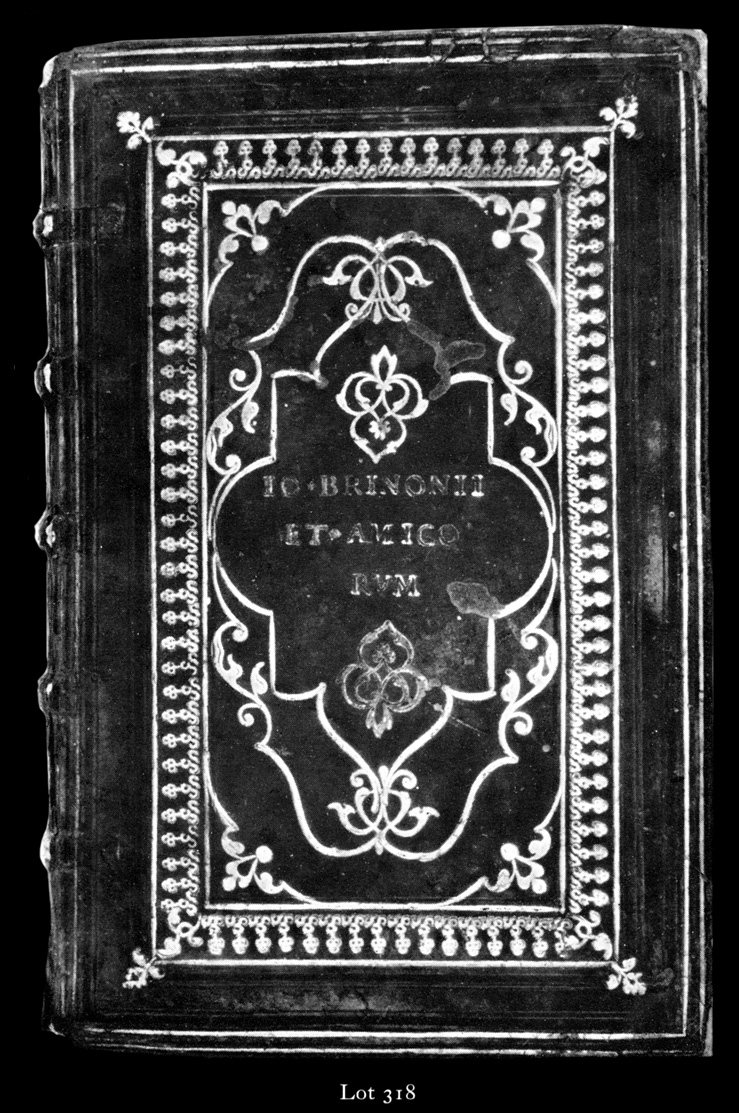

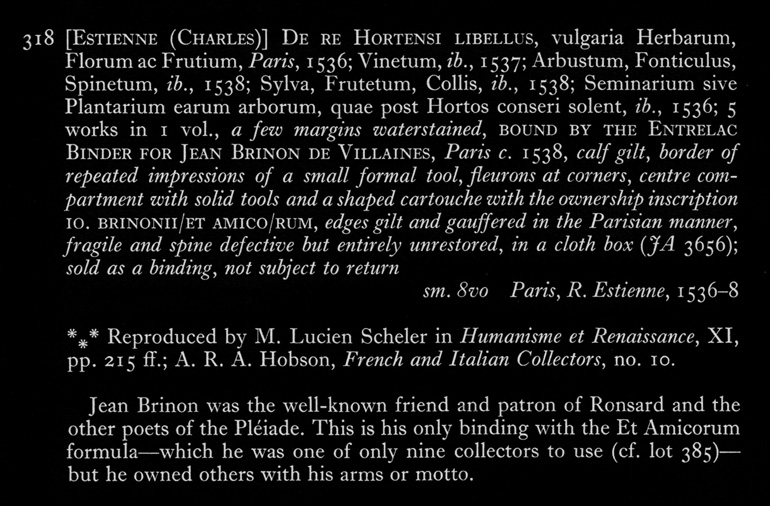
| On a previous page we were looking at a possibly early binding by Picard, the corner fleuron was an unusual type not often used by Picard and Nixon did not even have a rubbing of it. We see it again here on the binding shown above as well as some other tools not often used by Picard. This reproduction comes from a 1965 Sotheby's auction catalogue: Catalogue of valuable printed books and fine bindings from the celebrated collection of Major ABBEY This binding is Lot 318 and I have included above the description given for this item, in which we discover that they have attributed the binding to the ENTRELAC BINDER c.1538 (we now know that the Entrelac Binder is Jean Picard). I think it may be possible that this binding does date to 1538 and thus precedes the Grolier bindings. The inscription IO. BRINONII/ET AMICO/RUM made for Jean Brinon de Villaines is very similar to that of Grolier, and one wonders who had this idea first. Or whether Picard made such bindings for Grolier before 1540, the date of their partnership with Aldine publishers. Below in Comparative Diagram 1, I show a rare imprint C. de P. 43 compared with Nixon's 1965 rubbing |
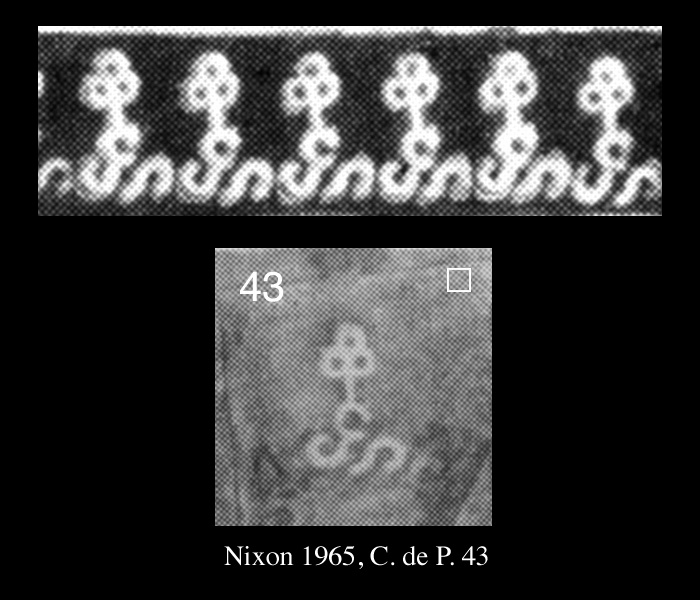
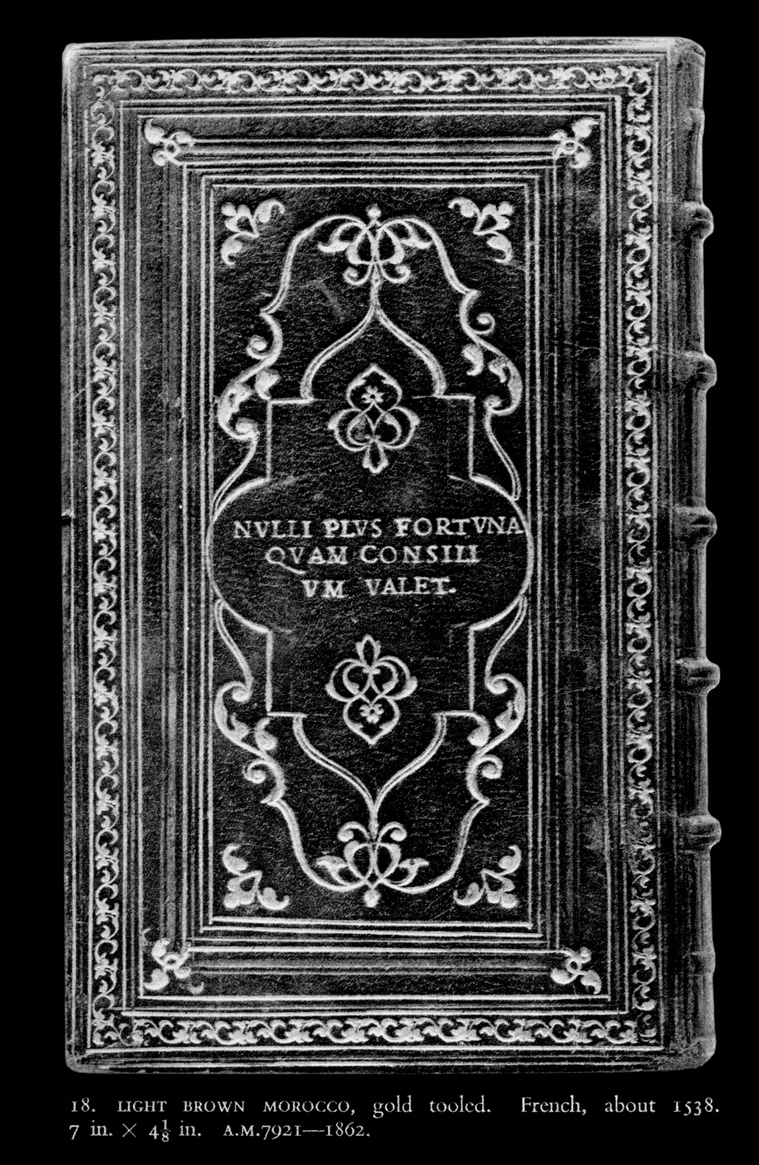
| The reproduction of the binding shown above os from a tiny publication by the Victoria and Albert Museum entitled A picture book of Bookbindings (Part 1: Before 1550) first printed in 1927, my copy printed in 1933, which was I suppose before the advent of "modern" printing, even in this small format the reproductions are superior to anything you will find 50 years later. They have listed this binding as "about 1538" which is probably a well considered estimate. After collecting C. de P. 12 imprints for Comparative Diagram 2, I was beginning to suspect that certain examples have a longer leg, but maybe I am just getting paranoid will all the imitation binders out there. Picard has used this fleuron in the corners in both bindings, perhaps this might also be a sign of an early binding. |
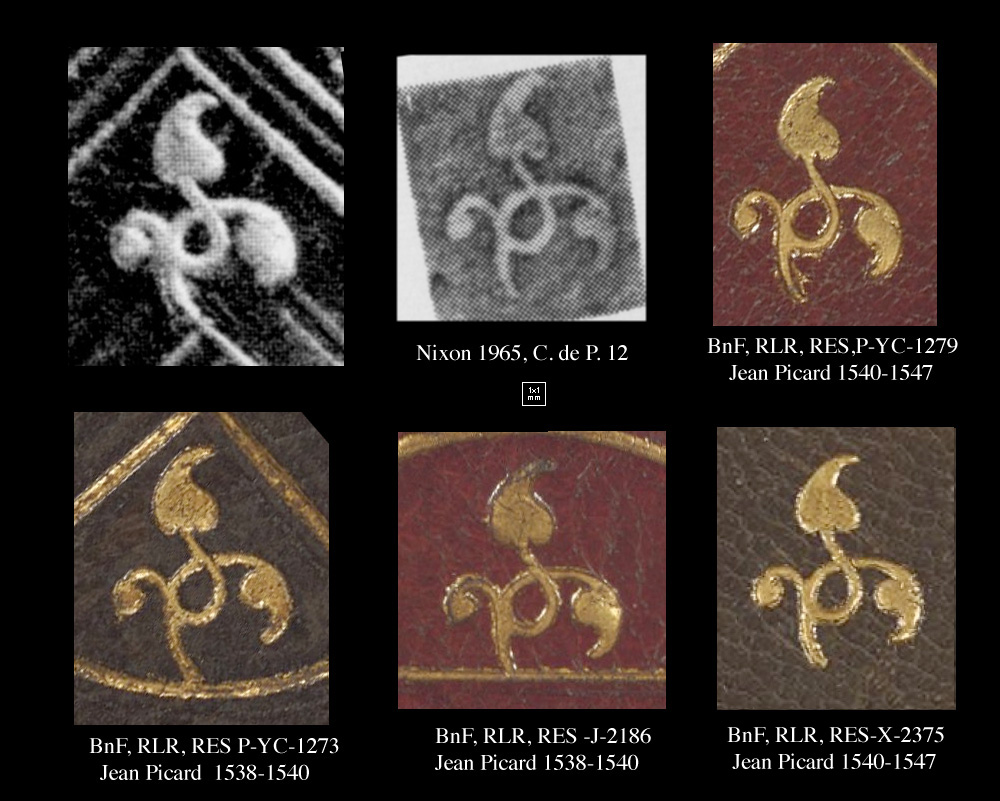
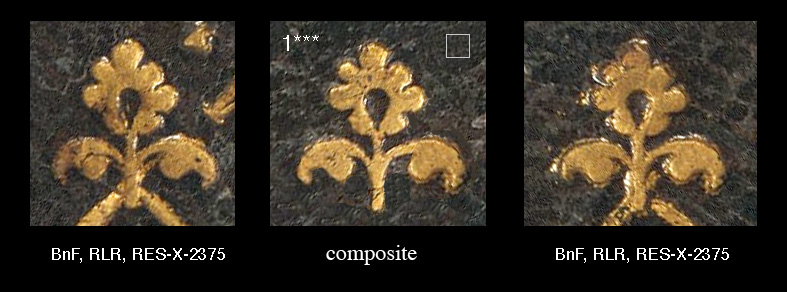
| I include here in Comparative Diagram 3, some enlarged (600 dpi) specimens of C. de P. 1***. This rare fleuron was not included in Nixon's rubbings. I have also created a composite type model from these high quality imprints. This fleuron is tiny as we can see by the 1 x 1 mm. white square |

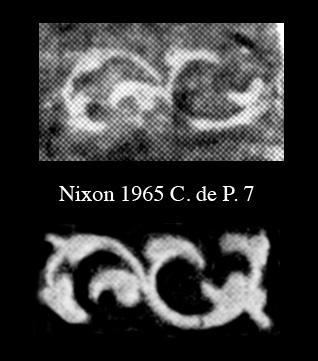
| Finally in Comparative Diagram 4, I examine the small tool that has been used repeatedly to create a roulette like, outer border. Many people would guess that this is a roulette, and why not they were very popular in the first quarter of the 16th century. One can speculate that borders made by hand might have been a sort of tour de force obviously requiring the skill of a master of the art. One out of place imprint spoils the effect. If you study these imprints closely you will see that they have been placed one after another with meticulous precision, the margin of error perhaps less than a tenth of a millimeter. Nixon's bindings 76 (folio), 78 (folio), 79 (folio), 87 (folio) all folio bindings have borders made with this tool. Number 87 is a so called Architectural binding on a book printed in 1543. |
| information about the author | return to the home page of VIRTUAL BOOKBINDING |